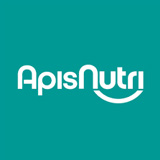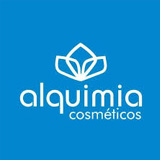In a world increasingly defined by individuality and personalization, the phrase “Feel free to modify these as needed!” serves as a functional mantra for creative expression in various fields. This phrase encourages freedom, flexibility, and adaptability across countless situations, from crafting a resume to bespoke cooking recipes, design templates, or even collaboration on projects. Personalization is not simply about making things unique; it speaks to the deeper human desire for ownership, relevance, and identity.
The Meaning Behind Personalization
The essence of personalization lies in its ability to resonate with the individual. In a commercial context, for example, personalization can lead to higher customer satisfaction and loyalty as brands tailor their products and services to meet the unique needs of their audience. In creative domains, such as writing or artistry, personalization invites people to add their unique flavors to existing frameworks, turning generic templates or ideas into individual masterpieces.
1. Personalization in Communications
In business and personal communications, the phrase “Feel free to modify these as needed!” has become more than an invitation—it serves as a bridge connecting the sender and recipient. This approach demonstrates trust and flexibility. When someone receives communication that suggests modification, it implicitly acknowledges that their perspective is valuable.
For instance, when sending out meeting agendas or project plans, a note that states “Feel free to modify these as needed!” encourages participants to tailor the content to suit their interests or objectives. In turn, this collaborative approach not only builds rapport but also enhances engagement and ensures that the outcomes are reflective of diverse viewpoints.
2. Personalization in Art and Design
The tools of creativity, whether visual art, graphic design, or content creation, thrive on the premise of modification. The digital age has paved the way for greater accessibility to software that encourages personalization. For instance, a graphic designer may share a template that serves as a base, inviting clients to “Feel free to modify these as needed!” This not only respects the client’s input but also leverages their unique vision, bringing forth a design that resonates authentically.
3. The Recipe for Personalization
There’s also growing trend in the culinary world surrounding personalization, especially when it comes to cooking and recipes. Chefs often share base recipes with the caveat, “Feel free to modify these as needed!” allowing home cooks to infuse their own tastes and preferences into dishes. This customization may include altering spices, substituting ingredients, or presentation styles.
For example, a basic pancake recipe may allow for variations depending on dietary restrictions, available ingredients, or personal taste. By encouraging modification, chefs give autonomy to home cooks, making the culinary experience more enjoyable and relevant.
The Importance of Encouraging Modification
Encouraging modification is not just an act of goodwill but can serve various beneficial purposes:
A. Fostering Creativity
When individuals feel empowered to modify a pre-existing idea, it can lead to heightened creativity. Instead of fearing judgment for deviating from the standard, individuals can explore new avenues, pushing creative boundaries and resulting in innovative outcomes.
B. Enhancing Engagement
Whether in collaborative projects or shared documents, the ability to modify content allows for more involvement from all parties. This increases buy-in, as participants feel their contributions matter, fostering a sense of ownership over the result.
C. Promoting Adaptability
Situations in life are rarely one-size-fits-all. By embracing the notion of modification, organizations and individuals can adapt to ever-changing circumstances or requirements, making them more resilient in facing challenges and seizing opportunities.
Personalization: A Double-Edged Sword
While personalization brings numerous advantages, it can also present challenges. The concept of personalizing instructions or guidelines can lead to confusion if not managed properly. This is often discussed in the realm of educational frameworks, where teachers may invite modifications to teaching materials for diverse learning preferences. However, without clear parameters, students can feel overwhelmed, creating the necessity for balanced guidance alongside flexibility.
Managing Expectations in Personalization
To reap the benefits of personalization while mitigating the drawbacks, setting clear expectations becomes essential. Clear documentation of parameters and objectives can support the creative freedom offered by “Feel free to modify these as needed!” By establishing guidelines that outline acceptable changes, individuals can navigate modifications without losing the original intent of the project or idea.
The Role of Feedback
Feedback plays a crucial role in areas where personalization is encouraged. When modifications are made, it is essential to have mechanisms in place for constructive feedback to enhance future iterations. This can be seen in educational settings, such as peer reviews, where students share modified projects and offer insights on each other’s adaptations.
In professional environments, feedback processes can take the form of design critiques or collaborative reviews. The aim here is to ensure that modifications align with the overarching goals while allowing for artistic freedom.
The Digital Landscape and Personalization
The digital age has transformed the way we experience personalization. Through AI and algorithmic advancements, many platforms are now powered by personalization technology, recommending content, products, or services based on individual preferences.
A. The Rise of Customized Media
Streaming services like Netflix and Spotify utilize personalization models that adapt to user behaviors. By recommending movies or songs based on viewing history or listened tracks, they utilize a modification metaphor—a user can explore a wide selection of content while the platform tunes itself to individual tastes.
B. E-commerce Customization
E-commerce has also embraced personalization, allowing users to tailor aspects such as clothing sizes, colors, or styles. Retailers encourage shoppers to “Feel free to modify these as needed!” by adapting product designs or features. Services like Printful or Zazzle offer customized merchandise that users can modify to express their unique tastes without sacrificing quality or individuality.
C. User-Generated Content
User-generated content (UGC) thrives on the idea of collaboration and personalization, allowing individuals to place their imprint on established frameworks. This is evident in social media platforms like Instagram or TikTok, where users creatively adapt trending concepts, editing and modifying them to fit their authentic experiences—individuals can “Feel free to modify” cultural memes or hashtag challenges, leading to a wider array of interpretations and engagements.
Conclusion: Navigating Personalization in a Shared Space
Personalization is a vibrant facet of both our personal and professional lives that reaffirms our authenticity in a world often driven by conformity. The invitation to “Feel free to modify these as needed!” encapsulates an ethos centered around creativity, collaboration, and adaptable problem-solving.
The beauty of personalization lies in its capacity to honor individuality while fostering connectivity and understanding. It encourages us to merge diverse perspectives, thereby creating richer outcomes than any single idea could achieve.
FAQs
1. What does ‘Feel free to modify these as needed!’ mean?
This phrase is often used to encourage individuals to adapt, change, or personalize something according to their tastes or requirements. It signifies flexibility and the value of personal input.
2. In what contexts can I use this phrase?
You can use this phrase in various settings, including business communications, collaborative projects, writing instructions, cooking recipes, art, and design workflows, and more.
3. Why is personalization important?
Personalization is important as it fosters creativity, enhances engagement, promotes adaptability, and can lead to higher satisfaction in both personal and professional experiences.
4. How can I effectively encourage modifications in shared content?
To effectively encourage modifications, establish clear expectations about what types of changes are allowed, create a supportive environment, and encourage feedback to enrich future endeavors.
5. What are some potential drawbacks of personalization?
Some potential drawbacks include confusion without clear guidelines, the risk of deviating too far from the original intent, and the potential for miscommunication when modifications are involved. Balancing flexibility with clarity is key.
6. How does digital technology influence personalization?
Digital technology, particularly through AI and algorithms, has revolutionized personalization in media, e-commerce, and user-generated content, allowing for tailored suggestions and custom options that cater to individual preferences.
By understanding the importance of personalization, we embrace a rich avenue for creativity and connection that acknowledges and honors our individuality, fostering a more engaging and fulfilling experience in all aspects of life.
It seems that you didn’t provide an article title for me to write about. Please provide a specific topic or title, and I’ll be happy to create a comprehensive piece based on that!




